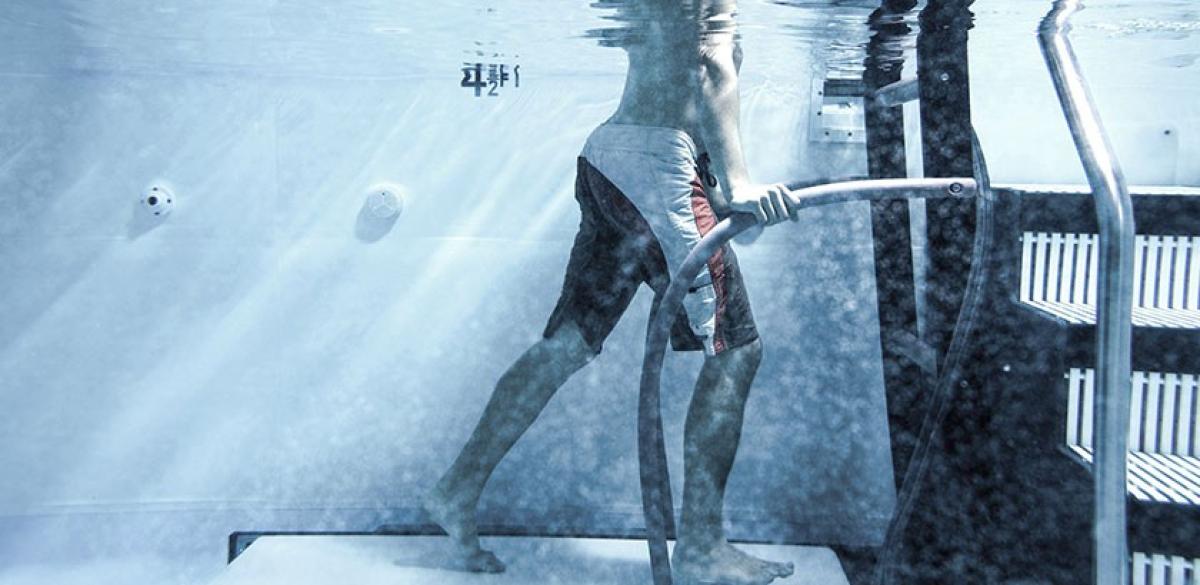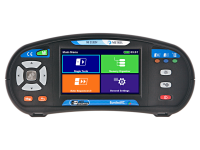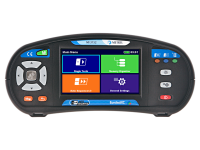Electrical safety in hospital wet areas
Patient recovery rooms and hospital wards

Wet area is defined as any that has the potential to get in considerable contact with water. This ranges from areas of particularly high air moisture and condensation to actually submerged areas. In a hospital, such areas are mostly found in patient recovery areas like swimming pools or wellness clinics.
It is also beneficial to consider surgery rooms wet, as saline or even blood can splash to the floor or walls. Electrolyte-rich liquid, like any of those mentioned, is a good conductor, and any spillage causes considerably increased risk of electroshock. Wet skin also has lower resistance, so the consequences of stray currents can be more serious. Similar conditions can be also found outside, in parks or recreational facilities. Electrical safety in such areas must be more rigorous.
Mechanical properties
The first line of safety is mechanical and chemical compliance of any equipment used and parts of installation. Wires and devices should be coated in insulation certified for wet locations. Other types may degrade quickly. Moisture is one of the most common problems with insulation meant for dry places. The main concern is the danger of leakage in combination with water and possibly wet skin. With non-distilled water as general conductor in e.g. a pool, leakage can be dangerous to swimmers even meters away from the fault. Any equipment (lights, any kind of massagers, pumps for the baths …) used in contact with water must have IPX7 or higher protection certification.
Safety areas
Safety areas are defined by the distance from actual submersion in water. E.g. inside of a bath or pool is zone 0. No electrical part should be installed there unless it conforms to the previous paragraph. Zone 1 is the immediate vicinity of the submerged area, like wall above the bath or pool. It gets splashed regularly, but is not submerged. Zone 2 is the extended vicinity, up to approximately 60cm from the wet edge. It can get splashed, but more rarely. Zones 1 and 2 can contain equipment with protection IPX4 (or IP X5 for any space with horizontal water jets). There is still extra caution advised when working in these areas. Any switches should be installed outside zone 2, but one can still reach them with wet hands. Exchanging them for cord-operated variants is the safest way. The maximum operation voltage of the devices that can be switched on from a wet space is 12V.
Measurements
Generally speaking, electrical safety is the same as for any public place, but it should be observed very rigorously. Any wet place should have the installations well-insulated, and leakage current should be monitored as well. Protection by 30 mA RCDs is mandatory, as unexpected shocks are much more probable than in dry rooms. Equipotential bonding must reach any metal object. Exceptions that can be used for dry places do not apply. Maximum contact voltage is 25 V.
For workers and visitors to the place, it is most important that they care for their own safety. Nobody should be operating electrical devices, particularly ones with no water proofing, with wet hands. Appliances that operate at higher voltages should be kept at a safe distance from water. Any bathroom or pool appliances should be installed high on the walls and out of reach.
Bathroom and kitchen generally are the most hazardous places in both residential and public places that need thorough bonding. In a hospitals, great care must be taken with bonding the metal beds. Patients are often in a compromised state, their natural defenses are down, and they are very sensitive to even to very small leakage currents.
Main reasons for faulty voltage difference are a ground to phase fault or a lightning strike. Some types of piping and machinery can also get charged due to friction between moving parts or even friction between the liquid and the pipe it is flowing in. Particularly the latter can cause fires if the liquid is flammable. Once everything is bonded, it should also be safely earthed, and earth wire continuity tested as per standard IEC 61557-4. Acceptable measuring voltage is 24 V and current should be at least 200 mA. Continuity of bonding every item and earth connection has to be checked, plus earth bond and earth resistance.
Metrel offers a choice of installation testers that can work in a wet or any other area as long as it is dried for maintenance. MI 3155 is the first choice for any installation. In the specific case of a wet area, the defining feature is its ability to test the special types of insulation at voltage of 2.5 V, determining its state with high accuracy.













